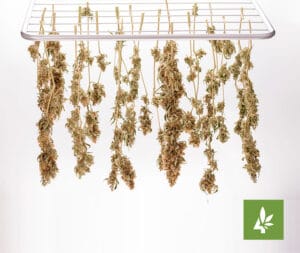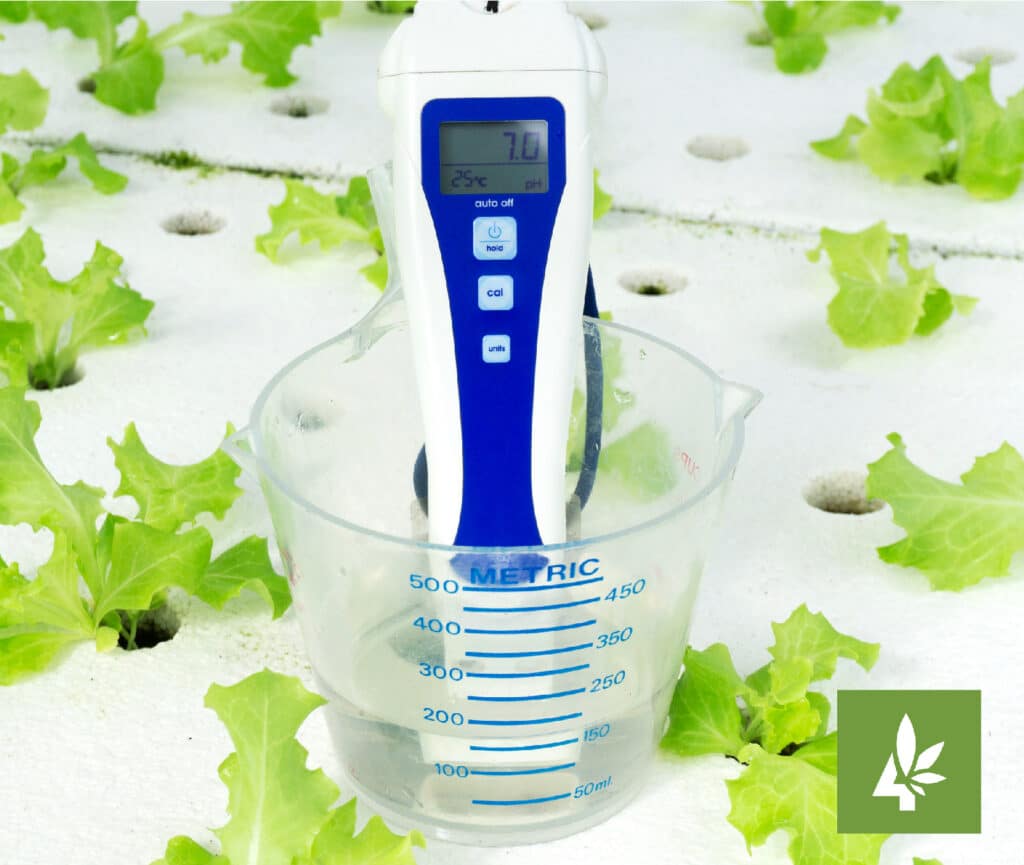pH is among the most important controls in the garden. But to understand it, we must first look at the basic biological function of plants. In total, there are 16 essential elements that plants can absorb. These elements are divided into categories that contain specific biological functions called micro and macronutrients. However, to properly uptake these elements, plants must be fed within an adequate pH range. If you’ve recently noticed some leaf discoloration, mutation, or poor growth, it’s quite likely an inadequate pH range is the culprit behind these issues. Read the following passages for more information on the importance of pH and learn how to test the run-off of your crop.
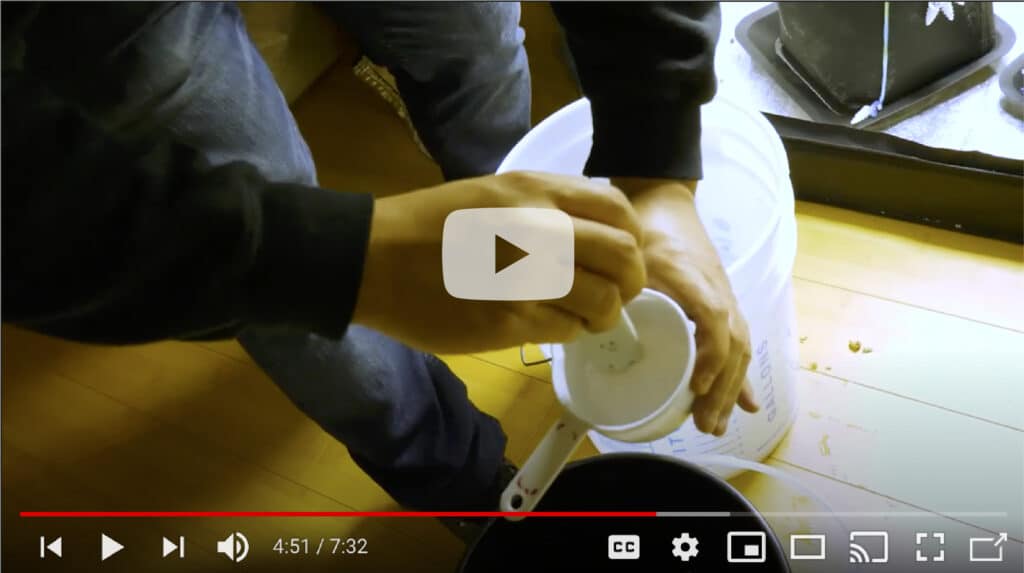
What is pH?
Potential Hydrogen (pH) is a unit of measurement that describes the acidity or alkalinity of any given substance on a scale of 0-14, with 7 being neutral. In the field of gardening, however, pH is the main factor that dictates the uptake of nutrients in the root zone. Depending on the pH of your nutrient solution, your plants may uptake more or less of a specific element.
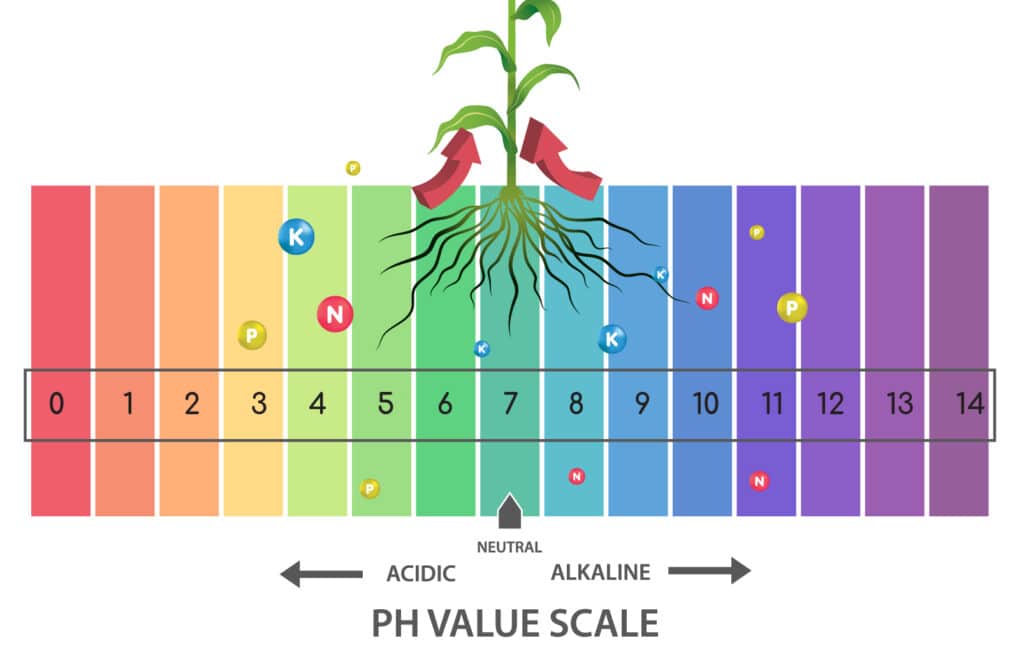
The pH Scale and Nutrient Uptake
For plants to remain healthy and happy, they must be fed within an ideal pH range. For cannabis plants in peat moss or soil-based systems, this pH range is anywhere between 6.0 – 6.5. This scale can be thought of as the “sweet spot” for nutrient uptake. At this level, plants can uptake essential macro elements such as nitrogen, phosphorus, and potassium, while also having access to important micronutrients that help ward off common deficiencies and lead to the faster and healthier development of new growth. Examine the chart below to learn more about the ideal pH range for cannabis plants.

Problems with pH
A variety of issues can arise if plants are not fed within an adequate pH range. Imagine sitting down to a nice meal and attempting to eat a steak through a straw. It just wouldn’t be possible; the steak would go to waste, and you wouldn’t be able to digest and absorb the nutrients your meal had to offer. This is the same issue plants experience when fed at a pH outside of acceptable ranges. In short, if fed at pH far outside the ideal range, plants will be unable to uptake and absorb valuable nutrients. This can lead to medium acidification, nutrient lockout, deficiencies, and the buildup of salts. If you’ve noticed worrisome growth patterns, it’s quite likely your plants are experiencing one or more of these issues. Follow the steps below to test the pH of your run-off and remedy the problem.
How to Test the pH of Your Run-Off
Step #1: Water Your Plants Until Run-Off
To test the pH of your plant’s run-off, we need to collect a sample. Start by watering your plants with plain, neutral water (with a pH of 7.0) until roughly 20% of the water runs out of the bottom of your container. For example, if your start by watering your potted plants with 1 Litre of plain water, at least 200mL should run out of the bottom of your container.

Step #2: Collect and Test the Run-Off
Collect your sample in a small container and test the pH. Ideal pH ranges for run-off should be between 6.0 – 6.5 in soil/soilless mixes like peat moss. However, any pH close to this range will be acceptable. If you test your solution and the pH deviates more than 1.0 from the ideal range, it’s clear that your plants are outside of acceptable ranges of nutrient uptake. Remember, plain water acts like a solvent that rinses and neutralizes excess acidity. So, any number you receive from your run-off test is likely higher than the real pH value. For any pH range under 5.5, continue to step #3 below.
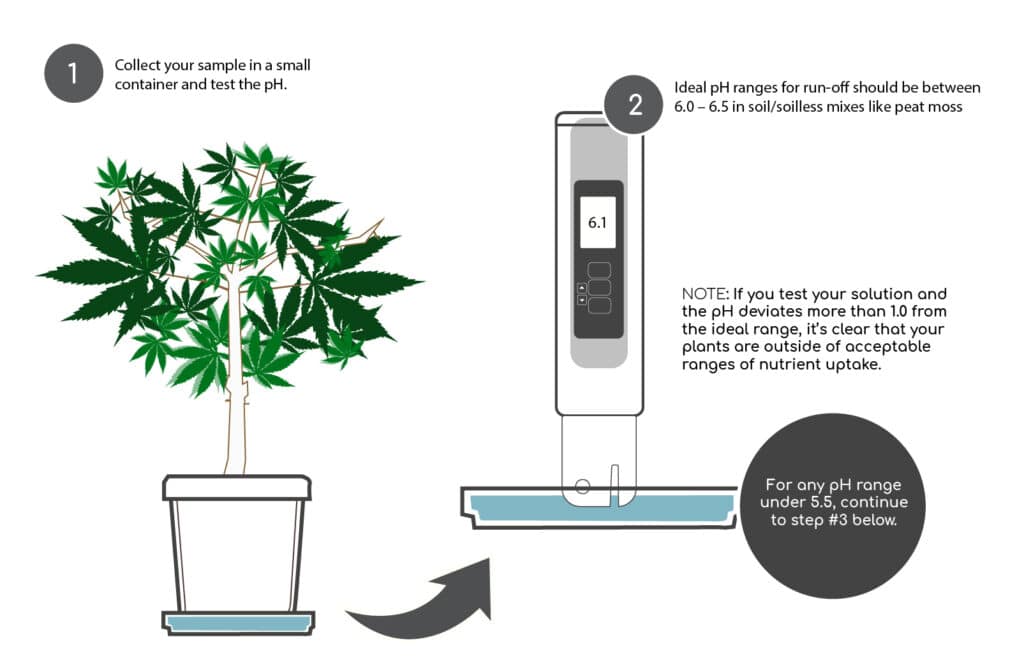
pH Testing Equipment:
Step #3: Buffer/Neutralize Your Medium
Soil acidification is a common side-effect of fertilizers containing high amounts of nitrogen (N). If you find that the results of your run-off test yielded a pH value of 5.5 or lower, you might want to consider buffering or neutralizing your medium with dolomite lime or oyster shell flour. Lime and oyster shell flour are two supplements that are high in calcium carbonate; and, when added at the correct rate, these products can essentially reverse soil acidification (Hart & Mellbye, 2010, p. 13). In smaller pots, top dressing your medium with a calcium carbonate supplement will be sufficient to manage an undesirable pH. However, in larger containers, some general tilling (approximately 2 inches into the medium) is recommended.

Step #4: Continue to Monitor the pH of Your Crop
After amending your medium with a neutralizing agent, the pH of your root zone should become stable over the next few irrigation cycles. As you water your plants, the pH neutral properties of either lime or oyster shell flour will slowly dissolve into the soil, thus raising the pH gradually over time. Resume your regular feeding schedule at a reduced rate and continue to re-test the pH of your run-off. When stable, your plants will be able to absorb all the essential nutrients offered to them. Soon, new, healthier growth patterns will emerge, and nutrient deficiencies will no longer plague the development of your crop.
Congratulations on growing cannabis at home! Join us for more information about growing cannabis at home. For more tips on testing the pH of your run-off, contact our team at Grow Your Four.
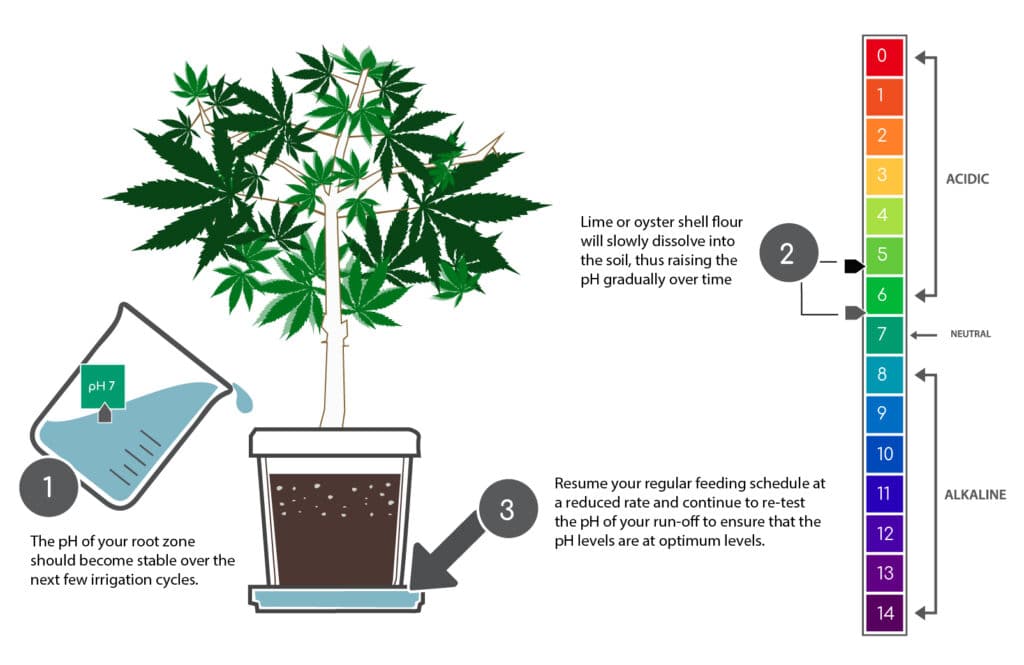
Works Cited
- Hart, J. & M. Mellbye. (2010). Annual ryegrass seed production in acidic soil. Seed Production Research at Oregon State University, USDA-ARS Cooperating. Retrieved May 26th, 2021 from OregonStateEDU.com

Join us for more information about growing cannabis at home! For more tips on transplanting your cannabis seedlings into pots, contact our team at Grow Your Four.
Read More
- Tips on Curing Homegrown Cannabis
 After your cannabis is dried and processed, it’s time to think about curing, burping, and re-humidifying your crop to the perfect smoking and vaping consistency. Unlike drying, the process of curing cannabis involves slowly aging flowers in airtight containers to help seal in unique flavors and aromas. Much like the process of aging fine wine
After your cannabis is dried and processed, it’s time to think about curing, burping, and re-humidifying your crop to the perfect smoking and vaping consistency. Unlike drying, the process of curing cannabis involves slowly aging flowers in airtight containers to help seal in unique flavors and aromas. Much like the process of aging fine wine - How to Trim Cannabis to Perfection in 7 Easy Steps
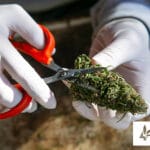 It’s true – trimming cannabis is one of the most monotonous jobs in the garden. But much the like process of knitting handmade fabrics, hand-trimming your crop is a special and necessary part of cultivation. Not only does hand-trimmed cannabis deliver a superior cut, but each flower during the hand-trimming process goes through an individual
It’s true – trimming cannabis is one of the most monotonous jobs in the garden. But much the like process of knitting handmade fabrics, hand-trimming your crop is a special and necessary part of cultivation. Not only does hand-trimmed cannabis deliver a superior cut, but each flower during the hand-trimming process goes through an individual - Grow Your Four’s Guide to Harvesting and Drying Cannabis
 By the end of week 8, your plants will likely be ready for harvest. Harvesting cannabis involves the important process of carefully drying plants to preserve and protect unique flavors and aromas. Much like the process of aging fine wine, carefully drying your crop has the potential to exaggerate the nose and taste of homegrown
By the end of week 8, your plants will likely be ready for harvest. Harvesting cannabis involves the important process of carefully drying plants to preserve and protect unique flavors and aromas. Much like the process of aging fine wine, carefully drying your crop has the potential to exaggerate the nose and taste of homegrown



